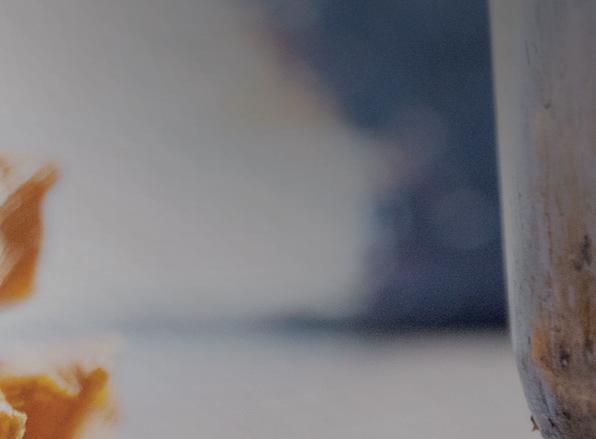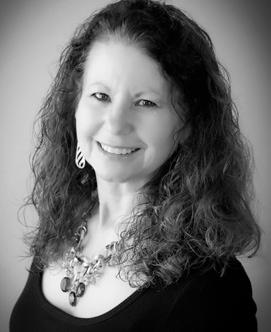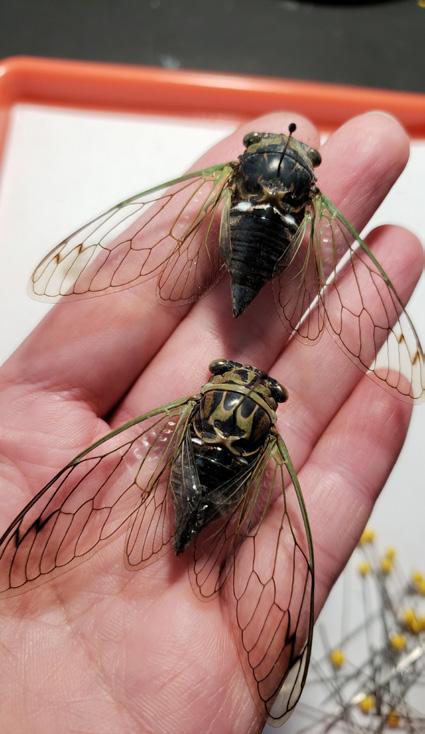Inherited
Women
Vera















 Big Apple Inn | Jackson, Mississippi
Big Apple Inn | Jackson, Mississippi

Inherited
Women
Vera















 Big Apple Inn | Jackson, Mississippi
Big Apple Inn | Jackson, Mississippi





You know all about our world-famous fried catfish, supremely satisfying soul food, and mouth-watering barbecue. But that’s just scratching the surface. Mississippi is a true destination for food adventurers, with delectable dining choices reflecting the great diversity of our people and our places. Plan your trip today at VisitMississippi.org/Flavors.

#WanderMS





Sue Goodman’s task of preserving family quilts led to a path of discovering more of her roots
Bristol, TN’s Birthplace of Country Music Museum’s newest exhibit shares stories of the women of old-time music
54: POLISHING THE SILVER
Vera Stewart recalls the beginnings of her love affair with food and entertaining
Alabama’s Kyle Larbarger brings attention to the plight of disappearing native habitats
This Texas family turned tragedy into hope by returning to the land and farming
 Photograph by Henry Gonzalez
Photograph by Henry Gonzalez
PG 9: WHAT IT’S ALL ABOUT
Your kind words, how to submit photos and more.
PG 11: OUR CONTRIBUTORS
The people who make our stories come to life.
PG 96: FINDINGS
Sarah Durst takes note of how the hometown hardware store is always ready to lend a helping hand whether you want it or not.
PG 26: SOUTHERN TABLE
Remembering Grandma’s biscuits.
PG 29: ON OUR PLATE
Croissant Beignets at Alys Beach, FL
PG 30: NOTEWORTHY
Try these unique takes on some local favorites.

PG 32: ON OUR PLATE
The tastes of spring come alive at Dancing Bear Lodge & Appalachian Bistro in Townsend, TN
PG 34: WORTH STOPPING FOR The Bar-B-Q Center in Lexington, NC.
PG 14: LIFE THROUGH THE LENS
North Carolina photographer, Benjamin Walls, finds joy capturing the beauty of nature.
PG 20: BY SOUTHERN HANDS
You’ll want these finds made by locals.

PG 22: TRUSTING THE MUSE
Joseph McSpadden recounts how a song got him through the loss of his father
PG 76: RECONNECTING ROOTS
Gabe McCauley looks back at America’s future and examines our past as a framework for facing what lies ahead
PG 82: LAY OF THE LAND
Our readers submit photos of their special Southern places and people. Photo above submitted by John Hendereson.

PG 90: LOW KEY ADVENTURES
Taking the road less traveled in Key West, FL

PG 98: WHERE WE WENT Old Cahawba Ruins and Archaeological Park in Orrville, AL
FRONT COVER
Protecting our natural habitats for future generations.



I am thoroughly enjoying the back issues of okra. that I have received. There is only one problem – I have a hard time getting the magazine away from my husband long enough to read it! I subscribe to four other magazines and never have to bargain with my husband for those magazines. Well written articles on a broad range of topics is certainly popular in my home. Jan F.
Love your magazine’s storytelling across the South!
Mark B.I love your magazine! Martha S.
I want you to know how much I adore okra. magazine! I love the work that y’all are doing, and it’s a joy to open each and every issue. As a photographer, aspiring writer, and avid travel enthusiast with a passion for all things Southern culture, I appreciate the work being done and hope to see many years of success.


 Jennifer B.
Jennifer B.
What does the South mean to you? Is it the beauty of our landscape; the houses, fields, mountains, seas and towns? Or is it our people and our foods? Maybe it’s even our beloved pets. The South is all of these things and so much more. Show us what it means to you by sharing your pictures with us. Send them to submissions@okramagazine.com
We’d love to feature them on the pages of okra. or share them on our website.

CATCH UP ON THE ISSUES YOU’VE MISSED. BACK ISSUES AVAILABLE, IN LIMITED QUANTITY. purchase @ okramagazine.com

Scott Speakes
Publisher
Genie Gaither Jones
Editor-in-Chief
Rebecca Cashwell
Design Director
J. M. McSpadden Liesel J. Schmidt

Contributing Editors
Richard L. Jones
Copy Editor
Advertising Sales Specialists
Brittany Sanders brmcdonald45@gmail.com
Scott Speakes scott@okramagazine.com

CONNECT WITH US

facebook.com/okramagazine @okramag contact@okramagazine.com

VERA STEWART is a nationally-recognized TV personality, cookbook author, and entrepreneur whose career in the food and hospitality industries spans nearly four decades. Launching her career in the 1980s with a cottage catering business, VeryVera, she has become a household name with ventures that included a bakery and café, and a national mail order business for her signature cakes and casseroles. She currently has the cooking and lifestyle show The VeryVera Show, the VeryVera Cookbook Series, the VeryVera Cooking Camp, and VERA, a catering, concierge and hospitality service for patrons of the Masters tournament in Augusta, Georgia.

DEBORAH BURST is a New Orleans native, author, and award winning writer/photographer with a portfolio of more than a thousand articles and photos including national covers. She has written five travel/photo books featuring the South, its people, critters, landscapes, mystical legends and historic architecture. From hidden graveyards and sacred temples to the shrouded bayous and forests, Deb gives a voice to all the spirits. deborahburst.com

PETER FRANK EDWARDS is a much sought after food, travel, and lifestyle photographer. His work is commissioned and published by some of the world’s leading corporations, brands and magazines with a photographic style relying heavily upon natural light and an easy-going rapport with his subjects. He was born, raised, and now resides in Charleston, SC. When not on assignment he enjoys cooking, cycling, and collecting oysters from the banks of the nearby Folly River.
HENRY GONZALEZ is an advertising photographer who has lived and worked out of Atlanta, Georgia, and the Southeast for over 20 years. Photography started as a hobby and became a career. After graduating from photography school, he moved to Atlanta and has been in demand ever since. He specializes in all types of photography: food, fashion, interiors and editorial. He’s always up for a challenge. henrygonzalezphotography.com


JENNIFER STEWART KORNEGAY is a freelance writer and editor based in Montgomery, AL. Her work has appeared in Garden & Gun, Southern Living, The Bitter Southerner, The Local Palate, thekitchn.com, Bake From Scratch, Paste, Travel&Leisure.com, Nashville Lifestyles, Birmingham magazine, Alabama magazine, Georgia Magazine, Alabama Living magazine and more. She’s interested in everything, will write about almost anything but most often reports on Southern culture, food and travel. jenniferkornegay.com
SARAH DURST is a writer, artist, and professor. She was a teacher and instructional coach for 16 years before finishing her Ph.D in Education and Writing Studies. At what could only be a God-calling, Sarah and her family moved from the midwest to the mountains of eastern Alabama. Sarah is a regular contributor to Okra. You can find her at sarahdurst@gmail.com and on Instagram @potters.daughter


MARIANNE LEEK is a retired high school educator who continues to teach part-time at Tri-County Community College. She lives with her husband in western North Carolina, where she spends much of her free time enjoying the outdoors. Her work can also be found in The Bitter Southerner.






How do you capture a summer day? Renowned photographic artist Benjamin Walls found summer through a camera lens, shooting miles of sunflowers along the banks of the French Broad River in Asheville, North Carolina. Maybe it’s the sunflowers, in their patterned Fibonacci splendor, or the rows and rows of corn nearing maturity that serve as a fertile backdrop, or the way a light fog has settled lazily above the river after a southern afternoon shower, that in this particular photograph conjures the simple beauty of an August aternoon in Appalachia. As you look at “Summer Day”, one of Walls’ most recent pieces, your eyes will inevitably come to rest on a single sunflower, significantly taller than the rest, stretching as if to get a better view of her surroundings. And in seeing this natural anomaly, the viewer can’t help but think of the artist himself.
Artist. Entrepreneur. Conservationist. Preservationist. Philanthropist. Benjamin Walls is a self-taught photographic artist, five-time Smithsonian exhibitor, two-time Natural History Museum of London exhibitor, and winner of seven international awards. His art has been showcased around the world, but much of his extensive collection can be viewed in the Benjamin Walls Fine Art Galleries with locations in Bristol, Tennessee, and Asheville, North Carolina, which also includes his signature WALLS Wine Bar. In addition to two highly rated galleries, Walls owns WALLSabout Luxury Travel and WALLS Luxury Lofts. But all of this didn’t happen overnight, and his humble beginnings in Bristol are what not
only inspired him to follow his North Star of emotionally connecting people to the natural world, but they are what continue to keep him grounded.
At six years old, Benjamin Walls received his first camera after seeing a promotion on the back of a cereal box and mailing in the required proofs of purchase. His first photograph was taken from the top of a tree where he captured a still image of a mother dove and her nestlings. He proudly showed the picture to his mother, and as he later described, “He was off to the races.”
Raised by supportive parents and a father who is an avid outdoorsman, Walls was immersed in nature from an early age. He continued to take pictures throughout high school whenever possible, frequently seeking opportunities by section-hiking the nearby Appalachian and Virginia Creeper Trails. While attending Appalachian State University, Walls would cut his entrepreneurial teeth by selling posters of his photographs out of his dorm room to fellow students. However, it was a trip to Australia and New Zealand to study abroad during his sophomore year in college that would forever change the trajectory of his life.
The inspiration and subject for one of his first and most beloved photographs, “Original Blues,” came out of that life-changing experience. During this trip, Walls hiked some of the most famous trails in the world. On his final day, after spending six months away from home and three days in the backcountry of the South Island of New Zealand, Walls found himself on a jetty in awe of his surroundings, feeling the warmth of the sunlight on his face. Overcome with emotion, he made a promise to his twenty-year-old self that he would return to that place and capture the sentiment of the setting and experience in a



photograph. A couple of years later, he made good on that promise.
After graduating from Appalachian State University, Walls had to make a decision: use what he’d learned earning his degree to start a travel company or follow his dream of becoming an artist. With little hesitation and no regrets, he chose the latter. But his decision came with a lot of unsolicited advice to “get a backup plan,” and parents who, while supportive, wondered how their adventurous, albeit talented, son could make a living taking pictures. Walls explained how a discussion with his parents only affirmed his decision, “When you go to your father and say, ‘I’m going to take photographs and present them in galleries and museums. I’m going to have my own galleries one day, and I’m going to inspire people and use that to change the world.’ And you’re the first person in your family to graduate from college - well, that’s kind of a radical thing. I’m not saying that there was not an eyebrow up, but my parents supported my vision - and the never-failing love, faith, and support of my mom has been incalculable.”

In 2003, armed with a camera and very little money, Walls left Bristol and embarked on an 18-month adventure that would span 30,000 miles, and spent fewer than five nights in a hotel. So how does a broke college graduate travel the world in pursuit of the perfect photos? Ingenuity and tenacity, patience, and perseverance. “I hit the road but, I didn’t have any money so the first thing I did was get an odd job on a cruise ship that allowed me to save money, buy cameras, and see different islands all at the same time. I worked 70-80 hours a week on the ship and took photos during my little windows of off time. Then I got a job teaching snowboarding. That way I could take photos of the Rockies and I still had a job. I then started flipping houses. There was a period of time when I’d flip a house and then take that money and go on a trip and create new work, and then try to sell that work and then I’d flip another house. There were a billion twists and turns and miscellaneous things along the way. “
“It’s difficult to describe how hard and inconsistent that time was. There would be a little money and I would think I can take a trip if I don’t stay anywhere and only eat on 15 dollars a day. From the time that I really earnestly started right out of college, all day every day working on this, it was seven years of beans and ramen noodles, and odd jobs and flipping houses, and living in my parent’s basement, and framing images out of my parent’s garage, and foregoing relation-

ships…the list is endless. It was like that not for a few years, but for the better part of a decade.”
By the time Walls was 27, two of those pieces from his time traveling after college were hanging in the Smithsonian and one at the Natural History Museum of London. Since then, Walls has traveled over a million miles capturing some of the most beautiful wild places left in the world. When asked about the location to which he feels most emotionally connected, he answered, “I tell myself that I haven’t found that place yet. That keeps me looking forward; that keeps me in adventure mode.” Walls explained that ultimately the places he feels most connected to are those to which he returns year after year “to do things that are sometimes not fun - waking up two or three hours before daylight and hiking out and sitting inside a willow bush waiting for elk to cross a river.” He described returning for six consecutive autumns to Grand Tetons National Park where he captured some of the most spectacular pieces in his collection. Titles like “Mountains of the Sky,” “Snake River Crossing,”
and “Oxbow Landing,” are all reflections of his time spent mirroring the magic of those quiet moments.

His story is one that resonates with people from the region on an emotional level. In 2007, Walls was drawn to a historic building on the corner of State Street, virtually condemned, with a vision of creating luxury lofts on the second floor and a fine art gallery on the first. On the heels of a recession, most people were skeptical, but he was quick to defend his decision, “It was three years of swinging hammers in that building and getting it up to the state it is now. Everybody thought I was crazy when I purchased it - my parents included, but I’m really proud of it. It’s a great home base and it has been for 12 years. I believe that profitability and historic preservation are not mutually exclusive. In fact, historic preservation conserves resources, reduces waste, and saves money by repairing and reusing.”
In 2010, Walls opened the doors of his first gallery to the public – a small crowd of mostly friends and family – and the manifestation of his dream would

become an integral part of the revitalization of downtown Bristol. Walls’ choice to photograph the natural world is a testament to his belief in the power of place. He is frequently asked, “Why Bristol? Why is this here?” He explained, “It’s an honor to be able to do these things. I saw an opportunity in downtown Bristol, and I love where I am from. I hope it’s an example of what’s possible. I’ve always had just a wildly independent mindset, certainly not in a reckless way, but in a very thoughtful and contemplative way. My hope would be that people don’t feel quite as pigeonholed with regard to what’s possible. I’m from what a lot of people would consider a simple part of the world and I’m from a very humble family. I just see that as an advantage and an opportunity. I’m proof that you can wander your own way, go about things your own way, and with a lot of hard work, tenacity, and a little bit of luck, that can go pretty well.”
Things continue to go “pretty well” for Walls. In 2016, he published his gorgeous coffee table book Beyond for which Dolly Parton wrote the forward. It was the culmination of “12 years of work, three hundred thousand exposures,





and over a million miles of travel.” The inception of the book is rooted in his deep love for Southern Appalachia and his fierce commitment to local and global preservation, with 5% of sales going directly to Friends of the Smokies, a nonprofit supporting the conservation of the Great Smoky Mountains. Walls explained what led him to approach Parton to write the forward, “I was doing an exhibit at the Tennessee State Museum called ‘Through Appalachian Eyes.’ I’m a Tennessee native, and the book starts in Appalachia and expands to subjects all over the world, much like my career had done; it told that story. I just thought to myself, ‘Who is more of a hero of mine from Tennessee, more specifically from Appalachia than Dolly Parton?’ She’s an icon. She’s a living legend. It was certainly a pinch-me day when she asked me to come down with a pop-up show of my work and announced she’d be writing the forward to the book.”
At that press conference, Parton told Walls, “I paint the Smoky Mountains with words, and you do that with your camera.”

Jamie Stephens is a naturalist. The kind who gets out in nature and sees the absolute beauty in things that others may not. At 46 years old, she has decades of exploring and collecting in her pocket—sometimes literally—amassing an assortment of insects and found objects that have caught her eye and captured her imagination. “As a child, I would walk in the woods and around my home, filling my pockets with all kinds of objects that I would find…rocks, feathers, flowers, sticks. The small details fascinated me, so I started a collection of natural treasures which continued into adulthood,” explains this Birmingham, Alabama, resident. “As my collection grew, I wanted to showcase them. I learned how to pin insects and how to create shadow boxes to protect all the beautiful things I had found over the years; but as time went by, the beauty of the objects would fade inside the glass frames.”

At the time, Stephens was working as a graphic designer for Golden Flake Snack Foods, utilizing her creativity and artistic skills to design packaging labels, fleet graphics, and various advertising. “My job was fun, but working as a corporate graphic designer lacked the freedom to flex my creative muscles,” she notes. “A few years into my job, I started making wire wrapped jewelry to keep my hands busy at night. It was so relaxing to twist the wire into shapes, adding colorful
beads and not having to worry about design approvals. I made a few pieces using rocks I had collected, along with various vintage beads and old skeleton keys. The pieces were fun to make, and they were pieces that I wanted to wear myself.”

The jewelry making also lent itself to another interest of hers. “I wanted to find a better way to protect the beautiful insects and objects I’d collected from nature than the shadow boxes I’d been making.” Through research, Stephens learned of a method of electroforming, or “growing” copper onto organic objects. “This was exactly what I had been searching for, and so began my journey creating jewelry using various found objects, combining insects and gemstones with other mixed media.”
Launching Jewelry by Jamie in 2011, Stephens saw the pursuit more as a hobby and side-hustle than an actual business. “In the beginning, I gave a few away to friends as gifts, but I made too much—more than I could ever wear,” she says. “The more I made, the less space I had to store it. I decided to sell a few pieces for supply money and to make room for the new creations I would soon be making. I am lucky to live right next to a community that has a farmer’s market, where I began selling small items on a folding table. In the beginning, I hardly sold anything—but that did



not discourage me, and I continued to set up each weekend. I began experimenting with wire wrapping, mixed media and electroforming various insects and crystals. Electroforming allowed me to combine my love of nature with my new passion for jewelry making. I enjoyed the challenge of the process and the possibilities it held. This is where I evolved as a hobby jewelry crafter into a jewelry artist.”
“The idea of taking something that is temporary, like a flower or a butterfly and transforming it into a wearable piece of art fascinates me,” Stephens says. Electroforming these delicate objects requires special equipment and preparation. To grow copper onto the actual natural specimen can take 18 to 36 hours, so careful preparation is the most important step in the process.
“All insects and botanicals used in my designs are found already deceased by myself or gifted to me by friends and customers,” she goes on. “I use the knowledge of pinning specimens for shadow boxes to reposition the insects to the desired shapes. They are then left to dry for days or weeks on a covered rack. Bigger insects such as cicadas and beetles take much longer than a butterfly or a flower. Once dried, I carefully begin incorporating gemstones and other wire components into my design. The specimens are extremely fragile and often break during this step. Sometimes, if I am using a very fragile dragonfly or butterfly, I must first reinforce the wings with patches and then grow an initial coat of copper before adding other
components to prevent breakage.”
Once the specimen is dried out, Stephens seals it with clear nail polish and applies a special conductive paint that allows molecules of copper to attach and grow onto the object while it is suspended in the copper sulfate acid bath. An electrical current draws the copper from the connection source and redeposits growth onto the object over many hours depending on the size of the specimen and desired thickness. After the copper process is completed, other design components, including chains, metal, glass, resin, paper, beads, organic material and vintage objects are added to the final design.
What makes Stephens’s pieces so special is, of course, the craftsmanship that goes into them, but also something else. “Each piece I make has a story behind it,” she says. “My family, friends and customers often are part of my process. They often save me little treasures they find, so I feel my jewelry is a collaborative effort. I can tell you where or who each object came from and the journey it made before being reborn into a new creation. A little piece of my spirit lives in each piece I make. They are each special and one of a kind, imperfectly perfect—made with an artist’s hands and heart.”
Jewelry by Jamie is available for purchase at select art festivals and pop-up events in Alabama as well as JBJ Jewelry by Jamie on Facebook, Jsteph1057 on Instagram, and online at jewelrybyjamie.com
